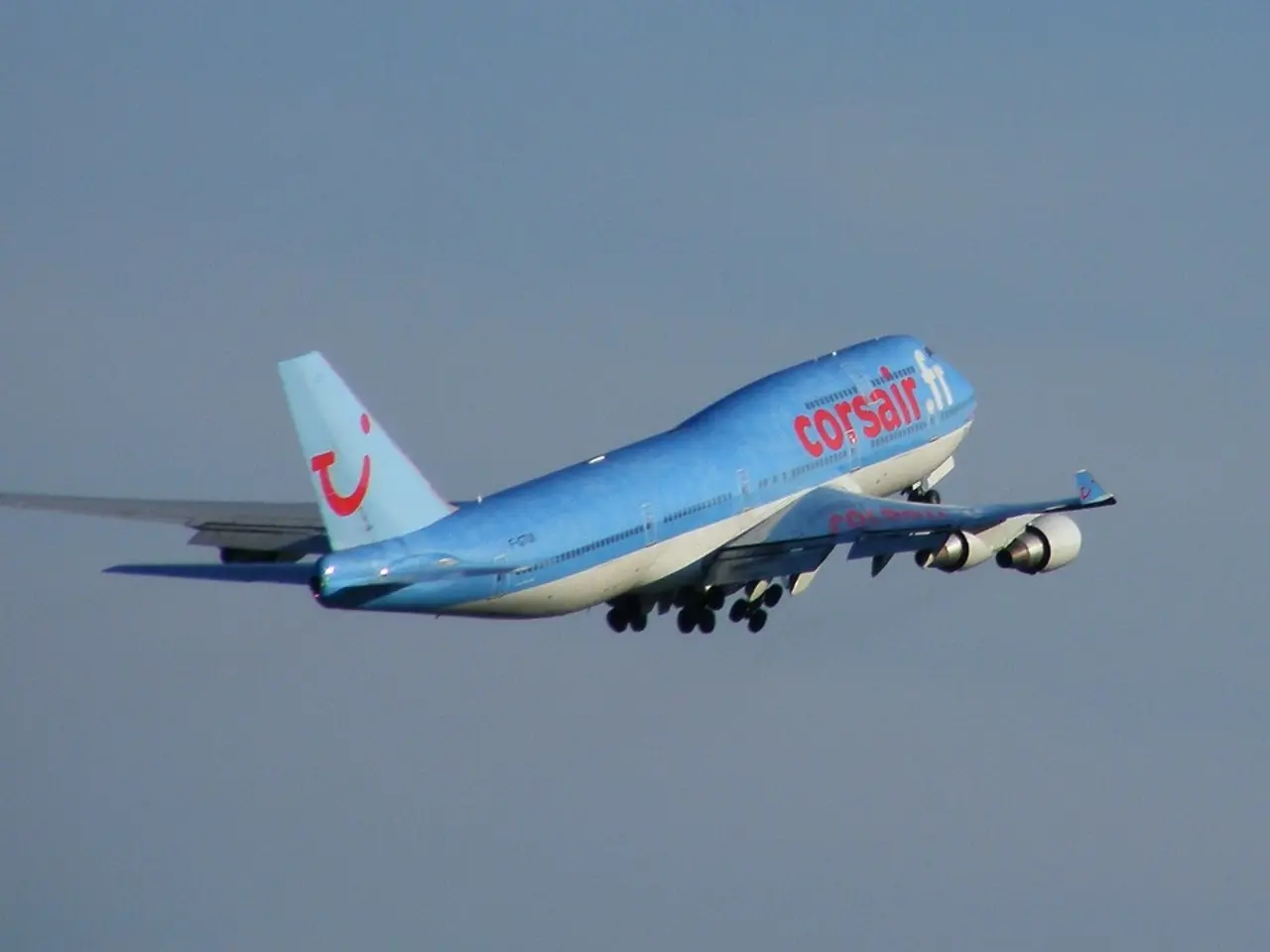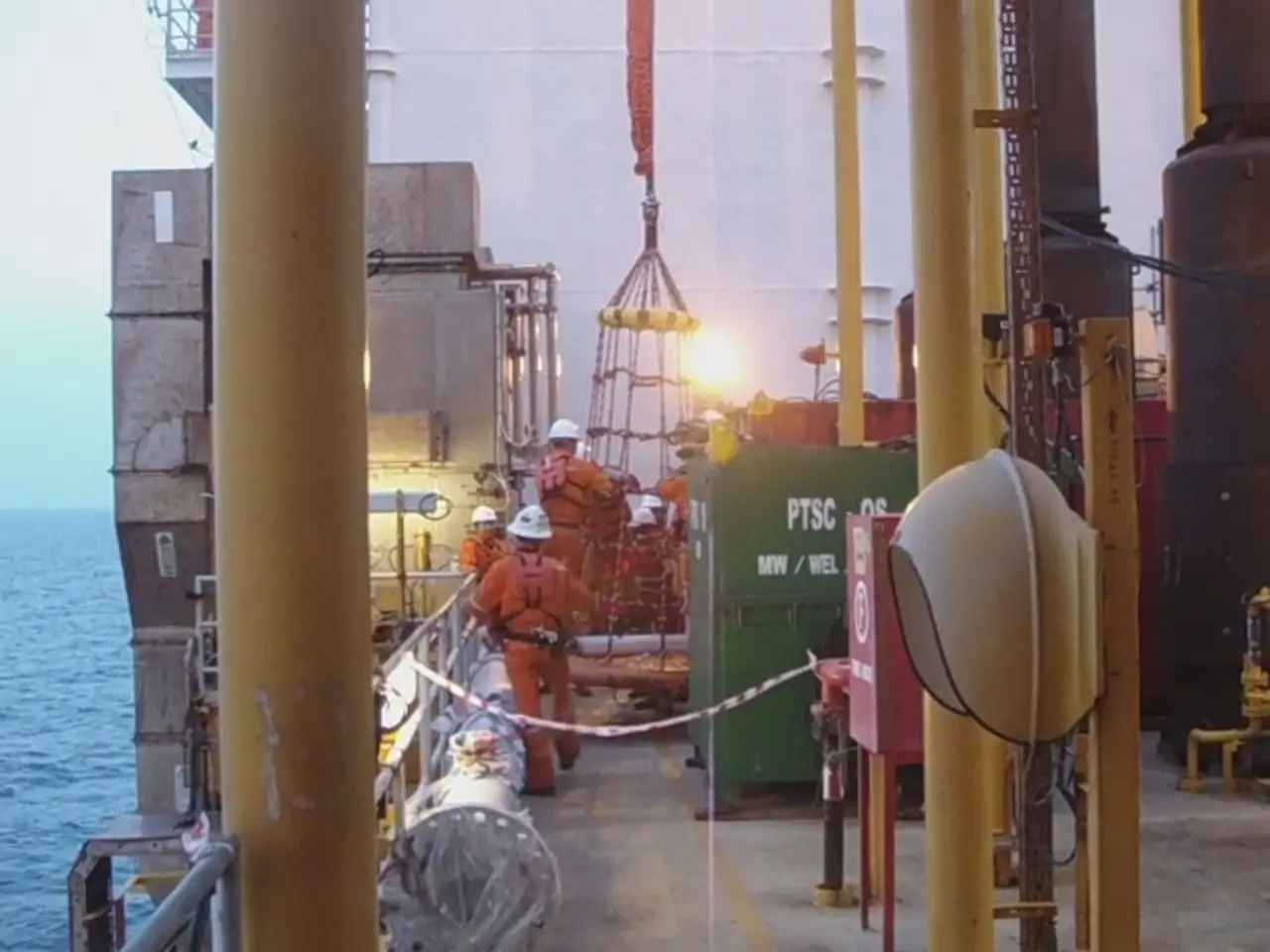Incident captured on video: Air India AN171 reports double engine malfunction
In a tragic turn of events, the cause of the Air India Flight AI171 crash in June 2025, as indicated by the deployment of the Ram Air Turbine (RAT), was a catastrophic dual engine failure due to fuel supply cutoff. This shocking revelation comes from preliminary findings of the ongoing investigation.
The RAT, a last-resort system in modern aircraft like the Boeing 787 Dreamliner, was deployed shortly after takeoff from Ahmedabad, according to enhanced video evidence. The RAT's activation suggests a rapid loss of power, strongly hinting at a dual engine failure just seconds after departure.
Key details supporting this conclusion include the RAT deployment recorded in airport CCTV footage during the initial climb, consistent with loss of both electrical and hydraulic power due to engine failure. The engines lost thrust because their fuel control switches were found to have transitioned from RUN to CUTOFF position one after another with a 1-second gap, terminating the fuel supply and causing the engines to spool down rapidly.
Cockpit voice recordings captured pilots questioning the fuel cutoff, with one pilot asking the other why he switched the fuel off, and the other denying doing so, suggesting the switch was unintentionally or mistakenly set during flight. There was no evidence of bird strikes or other external causes like fuel contamination being found near the crash location.
The Auxiliary Power Unit (APU) also automatically started after the shutdown sequence, consistent with the plane's systems trying to restore power after dual engine failure.
The RAT, a small wind-powered turbine that deploys in extreme emergencies, such as complete failure of electrical or hydraulic systems, is designed to provide the minimum power needed to fly and communicate. Examples of avionics powered by the RAT include altitude, airspeed, and heading displays, flight controls such as ailerons, elevators, and rudders, navigation tools like GPS and flight management systems, and communication equipment.
A historic parallel for the RAT's life-saving potential is the US Airways flight 1549, later known as the "Miracle on the Hudson," in which the RAT kept the Airbus A320's vital systems alive after striking a flock of geese in 2009.
The full final investigation is ongoing, but the current evidence highlights the fuel cutoff as the primary cause of the Air India Flight AI171 crash. The clear whine of the RAT in the new video provides an early technical lead for investigators examining the tragic fate of AI171, suggesting a total power loss, an extremely rare and deeply troubling scenario for such a modern aircraft.
The RAT's activation in Air India Flight AI171's tragic crash in 2025, as depicted in the new video evidence, indicates a critical loss of power, which can be linked to advancements in technology, specifically the Ram Air Turbine's role in modern aircraft like the Boeing 787 Dreamliner. This emerging technology played a crucial part in trying to maintain vital systems during the emergency situation, demonstrating its potential significance in modern airline news investigations.




